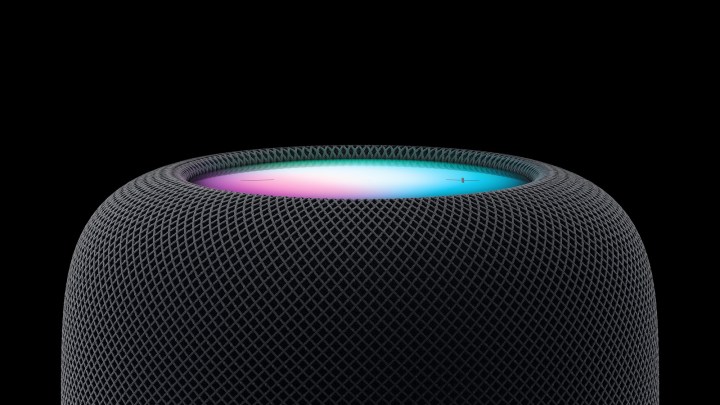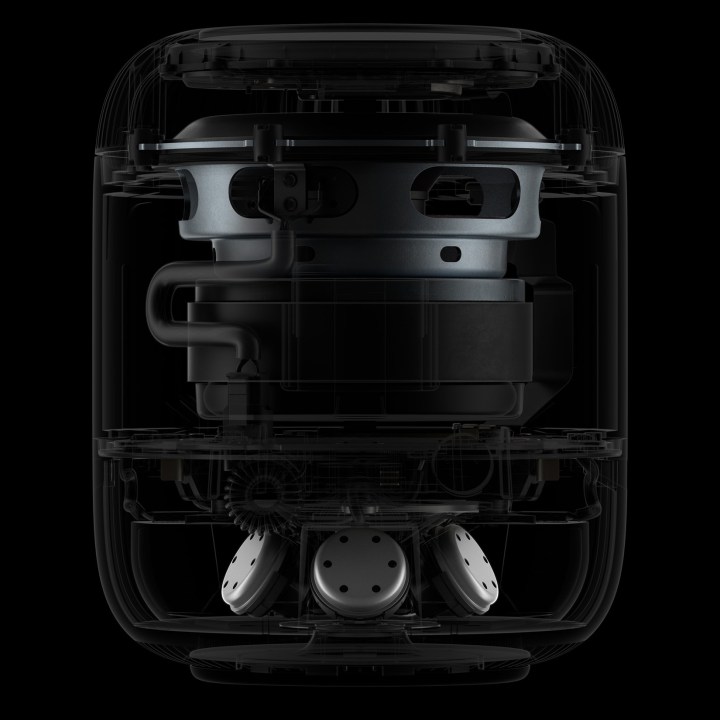Apple just announced its second-generation HomePod. And it did so without too much fanfare, via press release and just a day after it unveiled new M2 processors inside new a MacBook Pro and Mac mini. And while there maybe wasn’t much fanfare, there was plenty of flourish — also in typical Apple fashion — without divulging all that many details about what’s new.

There’s the lower price, of course, with $50 shaved off the first-gen HomePod price. The internals have been reworked some, though whether that’s to lower the overall cost, or just to make things better, remains to be seen. But It’s got a new S7 processor instead of the older (and less purpose-driven) A8. It’s got support for the Matter smart home standard and can listen for things like carbon monoxide alarms. And it’ll still play music and do other smart home stuff.
It’s also too expensive for most folks at $300. The catch is that the price probably doesn’t matter if you’re the sort who will be purchasing a new HomePod.
The new HomePod is a little less expensive, but still a smart speaker for the upper crust.
Consider, for a minute, the biggest competitors to the HomePod which, to be clear, is a premium smart speaker. This isn’t some $50 throwaway music maker. Amazon’s Echo Studio costs $200. A Sonos One is $219. Google’s awkwardly named Nest Audio isn’t quite in the same ballpark, but it’s $100, just for comparison’s sake. Or you could get Roku’s wireless speakers and wireless subwoofer for less than a single HomePod — and still have enough left over for lunch.
Does the new (or old, for that matter) HomePod do that much more than any one of those speakers? They all connect to the internet and do internet things, from music to smart home. (OK, Roku is really about home theater and not smart so much smart home.) They can all be paired with other speakers for whole-home audio, or (for Amazon and Sonos, anyway) paired with your television for audio.

No, as is the case with Apple’s other products, you’re not just paying $300 for a smart speaker. You’re paying $300 for an Apple smart speaker. One (and again, just a single, standalone speaker) that ties into the larger Apple ecosystem in ways no competing speaker can do, from setup to everyday use. Put your iPhone next to the new HomePod and it’ll suggest things you can play. You can use the Find My feature on the speaker to find missing devices around your home. (Hopefully not too often.)
Give HomePod the benefit of the doubt and presume that it’ll have superior audio. But is it $100 better? For a single speaker? Maybe it is. Maybe your standards of what’s “better” just aren’t worth that much more money. Maybe you care less about Apple’s privacy and environmental lines and just want something that works well enough, if not as close to perfect as can be.
It’s the totality of the product that lets Apple charge that much more than its competitors. Also just the company’s sheer size — it can afford to sell fewer of these things, though even that doesn’t make it immune from being deemed less than a success, as was the case with the original HomePod.
Will this new model suffer the same fate? Good — great, even — though at a price that simply was too high for the market to bear?
We’ll start to see after February 3, when the second-generation HomePod is released.
Editors' Recommendations
- SharePlay is coming to Apple TV and HomePod
- The Apple HomePod is back, with new smarts, and a lower price
- Apple’s new AirPods Pro 2 use your iPhone camera to examine your ears
- How the Apple TV and AirPods Max solved my TV headphone woes
- No new AirPods Pro (yet) as Apple event births new Mac




